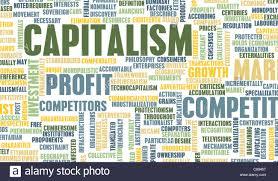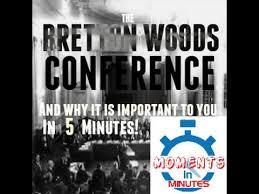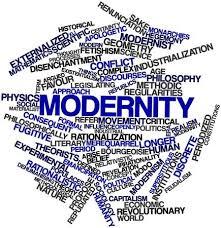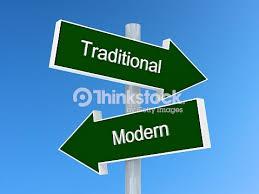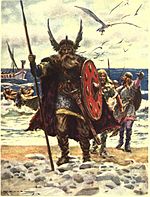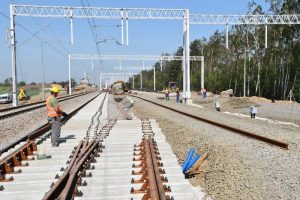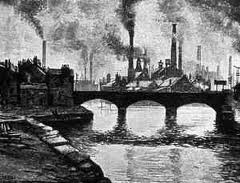What Is The Modernization? Quiz

Modernization is a continuous and open-ended process. Historically, the span of time over which it has occurred must be measured in centuries, although there are examples of accelerated modernization.
- 1.
_______ suggested that in a capitalist society, with a complex division of labour, economic regulation would be needed to maintain order.He stressed that the major transition from a primitive social order to a more advanced industrial society could otherwise bring crisis and disorder.
- A.
Durkheim
- B.
Hegel
- C.
Marx
- D.
Adorno
Correct Answer
A. DurkheimExplanation
Durkheim suggested that in a capitalist society, with a complex division of labor, economic regulation would be needed to maintain order. He stressed that the major transition from a primitive social order to a more advanced industrial society could otherwise bring crisis and disorder. Durkheim's ideas align with his theory of social integration and the importance of social cohesion in maintaining a stable society. He believed that without regulation, the division of labor could lead to anomie, a state of normlessness and social disorganization. Therefore, Durkheim argued for the necessity of economic regulation to prevent social crises in capitalist societies.Rate this question:
-
- 2.
Before the Qing Dynasty was overthrown, it attempted to reform from _______ to 1908 to save itself and instigated reforms in infrastructure, transportation, and government.
- A.
1902
- B.
1903
- C.
1905
- D.
1907
Correct Answer
A. 1902Explanation
The given question asks about the time period in which the Qing Dynasty attempted to reform before it was overthrown. The correct answer is 1902. This means that the Qing Dynasty started its reform efforts in 1902 in an attempt to save itself. These reforms included improvements in infrastructure, transportation, and government.Rate this question:
-
- 3.
Amongst other things, the Bretton Woods conference of _______ saw the establishment of the International Monetary Fund, and the International Bank for Reconstruction and Development.
- A.
1909
- B.
1944
- C.
1950
- D.
1965
Correct Answer
B. 1944Explanation
The correct answer is 1944 because the Bretton Woods conference took place in that year. This conference was a meeting of representatives from 44 countries who gathered in Bretton Woods, New Hampshire, to discuss the post-World War II international monetary system. One of the key outcomes of this conference was the establishment of the International Monetary Fund (IMF) and the International Bank for Reconstruction and Development (IBRD), which is now part of the World Bank Group. These institutions were created to promote global economic stability and provide financial assistance for post-war reconstruction and development projects.Rate this question:
-
- 4.
Who did contribute to the modernisation of China?
- A.
Jinping
- B.
Mao
- C.
Marx
- D.
Hui
Correct Answer
B. MaoExplanation
Mao Zedong contributed to the modernization of China. As the founding father of the People's Republic of China and the leader of the Communist Party, Mao implemented various policies and reforms aimed at modernizing the country. He introduced the Great Leap Forward, which aimed to rapidly industrialize China and improve agricultural production. Mao also initiated the Cultural Revolution, which aimed to transform China's social and cultural institutions. While these policies had mixed results and caused significant social and economic upheaval, Mao's leadership played a crucial role in shaping modern China.Rate this question:
-
- 5.
The historiographical concept of a German Sonderweg has had a turbulent history. Scholars of _______ _______ _______ who emphasised a separate German path to modernity saw it as a positive factor that differentiated Germany from the "western path" typified by Great Britain.
- A.
The 15th century
- B.
The 19th Century
- C.
The 20th century
- D.
The 21st century
Correct Answer
B. The 19th CenturyExplanation
Scholars of the 19th Century who emphasized a separate German path to modernity saw the concept of a German Sonderweg as a positive factor that distinguished Germany from the "western path" exemplified by Great Britain. This suggests that during the 19th Century, there was a belief among scholars that Germany had a unique trajectory in its development compared to other Western countries, particularly Great Britain. This concept of a German Sonderweg has been a topic of debate and discussion among historians.Rate this question:
-
- 6.
_____________refers to a model of a progressive transition from a 'pre-modern' or 'traditional' to a 'modern' society
- A.
Modernisation
- B.
Modernism
- C.
Modern buiding
- D.
Modernity
Correct Answer
A. ModernisationExplanation
Modernisation refers to a model of a progressive transition from a 'pre-modern' or 'traditional' to a 'modern' society. It involves the adoption of modern technologies, institutions, and values, as well as social and cultural changes that accompany this transition. Modernisation is often associated with industrialization, urbanization, and the spread of capitalism. It encompasses various aspects of society, including economic development, political systems, education, and social norms. The process of modernisation can have both positive and negative effects, as it can lead to increased standards of living and opportunities, but also to social inequalities and cultural dislocation.Rate this question:
-
- 7.
The historiographical concept of a Finnish __________________has not had a turbulent history.
- A.
Sonderweg
- B.
Stoklolm
- C.
Columbus
- D.
Artagnan
Correct Answer
A. SonderwegExplanation
The historiographical concept of a Finnish Sonderweg has not had a turbulent history. The term "Sonderweg" refers to the idea that certain countries, particularly Germany, followed a unique path that led to authoritarianism and ultimately to the rise of Nazism. However, in the case of Finland, this concept does not apply as the country did not experience the same trajectory. Finland maintained its democratic institutions and did not fall into authoritarianism or fascism. Therefore, the concept of a Finnish Sonderweg is not applicable and the history of this concept in relation to Finland is not turbulent.Rate this question:
-
- 8.
In the, China was able to produce most of commodities and goods by its own industry.
- A.
1980s
- B.
1960s
- C.
1990s
- D.
1970s
Correct Answer
D. 1970sExplanation
During the 1970s, China experienced significant industrial growth and development. This was a result of the government's policies and initiatives aimed at promoting domestic production and self-reliance. The country invested heavily in industries such as agriculture, manufacturing, and technology, which allowed them to produce a wide range of commodities and goods within their own borders. This period marked a turning point for China's economy, as it shifted from being reliant on imports to becoming more self-sufficient in meeting its domestic needs.Rate this question:
-
- 9.
Who defined modernization theory as a theory which states that development in developing worlds can be attained through following the processes of development that are used by currently developed nations
- A.
Rostow
- B.
Kjedahl
- C.
Kipling
- D.
Bassist
Correct Answer
A. RostowExplanation
Rostow defined modernization theory as a theory that suggests that developing countries can achieve development by adopting the same processes that developed nations have used. This theory emphasizes the importance of industrialization, technology, and economic growth in the development process. Rostow's theory implies that there is a linear path to development and that all countries can follow this path to achieve modernization.Rate this question:
-
- 10.
Mao modernised the People's Republic of China with massive industrialisation projects and ________________
- A.
Entrepreneurship
- B.
Communism
- C.
Social transformation
- D.
Fascism
Correct Answer
C. Social transformationExplanation
Mao modernised the People's Republic of China with massive industrialisation projects and social transformation. This indicates that Mao not only focused on industrial development but also aimed to bring about significant changes in society. Social transformation encompasses various aspects such as cultural, political, and economic reforms that aim to reshape society. Therefore, this answer aligns with Mao's efforts to modernize China by not only industrializing but also transforming the social fabric of the country.Rate this question:
-
Quiz Review Timeline +
Our quizzes are rigorously reviewed, monitored and continuously updated by our expert board to maintain accuracy, relevance, and timeliness.
-
Current Version
-
Mar 19, 2023Quiz Edited by
ProProfs Editorial Team -
Apr 13, 2019Quiz Created by
Tutuagyekum
- Age Quizzes
- Clan Quizzes
- Communism Quizzes
- Community Quizzes
- Conflict Quizzes
- Crime Quizzes
- Cultural Assimilation Quizzes
- Culture Quizzes
- Death Quizzes
- Destiny Quizzes
- Dictator Quizzes
- Disability Quizzes
- Environment Quizzes
- Ethnicity Quizzes
- Etiquette Quizzes
- Event Quizzes
- Feminism Quizzes
- Festival Quizzes
- Fraternity Quizzes
- Future Quizzes
- Gay Quizzes
- Gender Quizzes
- Generation Quizzes
- Girl Quizzes
- Goth Quizzes
- Homelessness Quizzes
- Human Rights Quizzes
- Humanity Quizzes
- Kid Quizzes
- Labor Quizzes
- Law Quizzes
- Lesbian Quizzes
- LGBT Quizzes
- Lifestyle Quizzes
- Man Quizzes
- Mature Quizzes
- Military Quizzes
- Morality Quizzes
- Movement Quizzes
- Museum Quizzes
- Mythology Quizzes
- Paranormal Quizzes
- Peer Pressure Quizzes
- People Quizzes
- Politics Quizzes
- POSH Quizzes
- Racism Quizzes
- Religion Quizzes
- Romanticism Quizzes
- Security Quizzes
- Social Quizzes
- Social Science Quizzes
- Spirituality Quizzes
- Superstition Quizzes
- Tribe Quizzes
- Wedding Quizzes
- Women Quizzes
- Work Quizzes
- Youth Quizzes
 Back to top
Back to top



